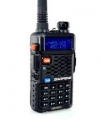
What are the Limitations of VHF and UHF portable radio communications?
The most common limitation of VHF/UHF technology is that it requires Line of Site (LoS) between transmission points.Whilst there are many tracks where this is not an issue, Kyalami is a challenge.
What are the Limitations if VHF/UHF handheld radios?
The popular use ... read more
